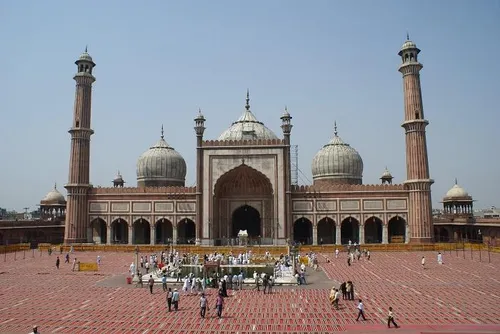
Jama Masjid: A Blend of History and Architecture
Situated in Sawai Madhopur, a historic city in Rajasthan, India, the Jama Masjid stands as a remarkable example of Mughal architecture and religious heritage. Known for its striking design and historical significance, this mosque is a prominent landmark in the region. Whether you’re a history buff, an architecture enthusiast, or simply curious about the rich cultural tapestry of Rajasthan, the Jama Masjid is a fascinating destination to explore.
Historical Background
The Jama Masjid in Sawai Madhopur was constructed during the reign of the Mughal Emperor Shah Jahan, around the mid-17th century. It was built as a place of worship for the Muslim community in the region and reflects the grandeur and architectural elegance characteristic of the Mughal period. The mosque’s design and construction are attributed to the efforts of local rulers and artisans who were under the influence of the Mughal architectural style.
Architectural Features
The Jama Masjid of Sawai Madhopur is celebrated for its impressive Mughal architecture, which includes several distinctive elements:
Grand Entrance: The mosque features a grand entrance with an arched gateway that leads into the main prayer hall. The entrance is adorned with intricate carvings and decorative elements that reflect the artistic sensibilities of the Mughal era.
Spacious Courtyard: The mosque is built around a large, open courtyard that provides ample space for congregational prayers and gatherings. The courtyard is surrounded by arcaded verandas and is paved with marble, adding to its aesthetic appeal.
Elegant Minarets: The mosque is flanked by four minarets, which are characteristic of Mughal mosques. These minarets are intricately designed and add to the mosque’s grandeur.
Beautiful Domes: The mosque’s roof features several domes, which are adorned with decorative patterns and motifs. These domes are an iconic feature of Mughal architecture and contribute to the mosque’s impressive silhouette.
Intricate Carvings and Decorations: The interior of the mosque is equally impressive, with detailed carvings and ornate decorations. The use of marble and sandstone enhances the mosque’s visual appeal and reflects the artistic craftsmanship of the period.
Religious and Cultural Significance
The Jama Masjid serves as a central place of worship for the Muslim community in Sawai Madhopur. It plays a vital role in the spiritual life of the region, hosting regular prayers, including Friday congregational prayers and special religious events. The mosque also serves as a cultural landmark, reflecting the historical and architectural heritage of the Mughal period.
Practical Information for Visitors
Timing: The Jama Masjid is open for prayers and visits throughout the day. However, specific visiting hours may vary, so it is advisable to check local timings or visit during non-prayer hours if you want to explore the mosque’s architectural details.
Dress Code: Visitors should dress modestly when visiting the mosque. This typically means covering the shoulders and knees. Women may be required to wear a headscarf, and removing shoes before entering the mosque is mandatory.
Photography: Photography inside the mosque may be restricted to preserve its sanctity. It is best to check the rules upon arrival or ask for permission if you wish to take photographs.
Respect: Visitors should maintain a respectful demeanor and follow the guidelines set by the mosque authorities. This includes observing silence, removing shoes, and refraining from disturbing worshippers.
Getting There
Sawai Madhopur is accessible by road and rail. The nearest major city is Jaipur, which is approximately 180 kilometers away. From Jaipur, you can travel to Sawai Madhopur by train or taxi. The Jama Masjid is located in the heart of Sawai Madhopur, making it relatively easy to visit.
The Jama Masjid in Sawai Madhopur is a testament to the architectural and cultural heritage of the Mughal era. Its grand design, intricate carvings, and historical significance make it a notable landmark in Rajasthan. A visit to this mosque offers a unique opportunity to explore the rich tapestry of history and architecture that defines the region. Whether you are interested in Mughal architecture, religious history, or simply seeking a serene place for reflection, the Jama Masjid is a destination worth exploring.
